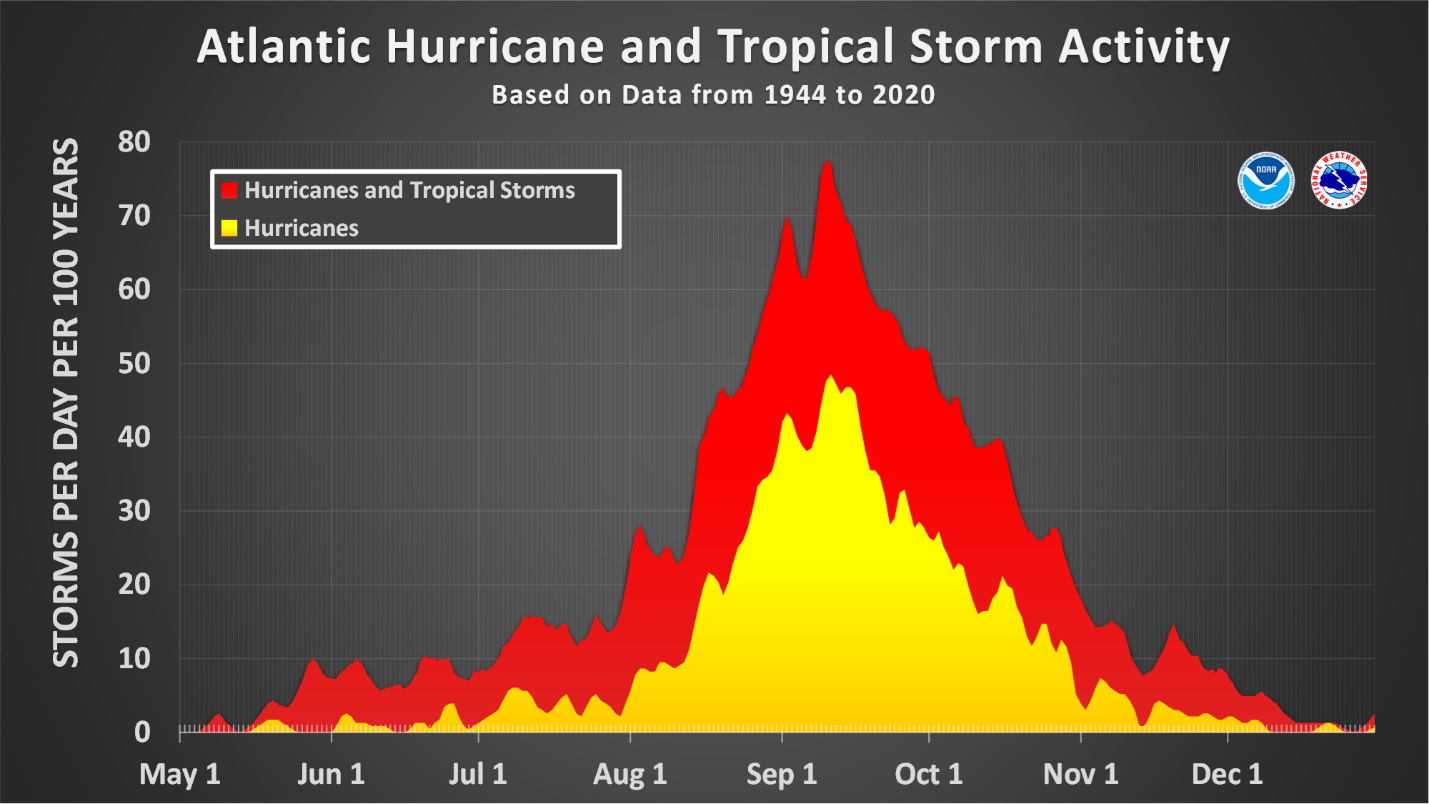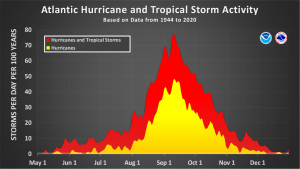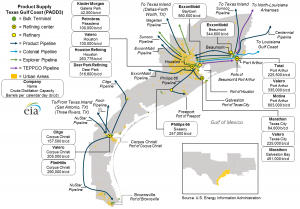
What Is It – Hurricane Season
Welcome to our continuing FUELSNews series: What Is It Wednesday. Each week, we’ll pick a fuel industry topic to explain, so you can learn more about the market and what drives it. Want to suggest a topic? Email the author, Alan Apthorp, at aapthorp@mansfieldoil.com.
Every year, the fuel industry braces for an unpredictable, potentially catastrophic few months known as “hurricane season.” Stretching from June through November (though storms can occur outside that time), hurricane season brings surprises each year. Much of the US’s population and fueling infrastructure lies along the East Coast and Gulf Coast, putting it at risk. Today, we’ll explore hurricane season in-depth and review how it impacts fuel markets.
When Is Hurricane Season?
The Atlantic hurricane season begins on June 1 and extends through November 30, though storms can occur before or after that time. In between those dates, there’s a peak around September 15 when hurricanes and storms are most likely to form. It’s not uncommon to see two or three storms forming simultaneously during peak season.
During hurricane season, storm progression can be uneven. For instance, during the destructive 2004 season, zero storms developed before August. The following year, seven storms had formed before August and even more formed later on. Neither a slow start nor a busy start guarantees how the rest of the season will progress.
Why Do Hurricanes Form?
At its most fundamental, hurricanes form when hot water mixes with low pressure. In reality, it’s much more complicated, with a wide variety of factors impacting storms. The National Oceanic and Atmospheric Administration (NOAA) has a helpful explanatory page describing the process of hurricane formation.
Some of the factors to watch out for during hurricane season:
Ocean Temperatures
Warm water is a critical factor impacting storm formation and strength. Warmer water will destabilize the air above it, creating fertile ground for strong storm development. Track ocean temperatures here.
Atmospheric Moisture
Storms require moisture in the atmosphere to gain strength. The more moisture, the higher likelihood of a storm forming. You can track atmospheric moisture here.
Wind Shear
Storms prefer that winds are the same speed both high and low in the atmosphere. If there’s a significant difference from the top to the bottom, it can disrupt the storm and cause it to break apart. See a map of wind shear here, where green is favorable for hurricane formation.
Saharan Dust
Since storms love moist conditions, dry air can prevent storms. Dry air often crosses the Saharan desert and travels across the ocean, disrupting storms and preventing formations as it travels. Check the current Saharan Dust forecast here.
El Niño & La Niña
Watch the weather, and you’ll probably hear about El Niño and La Niña. Put simply, El Niño means that water temperatures in the east-central Pacific (off the western coast of South America) are warmer than average, while La Niña means that area is seeing lower than average temperatures. El Niño tends to create a weaker Atlantic hurricane season (but a strong Pacific hurricane season), while La Niña creates a stronger Atlantic hurricane season.
For comprehensive updates during hurricane season, Mike’s Weather Page (spaghettimodels.com) does an outstanding job pulling in all the latest forecasts and weather factors for hurricanes.
How Do Hurricanes Impact Fuel Infrastructure?
Hurricanes can disrupt oil markets at several different levels. On the upstream side, a hurricane traversing through the Gulf Coast will shut down offshore oil production, limiting supply. The price effect is generally small, since the outage only lasts a couple of days, but it can be more pronounced during periods of very tight supply.
Much of America’s refining capacity can be impacted as well. Since many refineries lie in the Texas/Louisiana area, a hurricane can cause temporary shutoffs. More severe storms can bring power outages, flooding, and equipment damage, which all take refining offline for longer. When hurricanes bring severe, broad regional impacts, it’s usually because they took several refineries offline for weeks at a time.
Further downstream, power outages can shut down fuel terminals and prevent fuel trucks from being able to load fuel, causing bottlenecks as more trucks try loading from fewer terminals. Flooded roads and strong winds can also make deliveries unsafe or delay deliveries, stretching carrier capacity thin. And if consumers cannot receive a load, either because their facilities are shut down or because their tank experienced flooding, more disruptions are possible. On the retail end, power outages or local fuel supply shortages may make gasoline and diesel unavailable at many/all gas stations.
How to Prepare for Hurricane Season?
There are several steps fleets can take to prepare for hurricane season:
Have a clear emergency fuel supply plan. As early as possible, set a plan for hurricanes. This plan should be written down, name all the key parties who need to stay updated, and include steps for ordering fuel and communicating changes in demand.
Have sites prepare ahead of each storm. Monitor fuel usage to ensure tanks have adequate inventories, make sure all seal caps are watertight, and provide contact details for equipment and supply issues.
Communicate with your fuel supplier before, during, and after the storm. Have sites provide inventories with each order so your fuel supplier can prioritize effectively. Don’t over-order or allow your tank to run out – both can add to an already complex supply chain situation. If your demand changes or sites are closed, be sure to notify your supplier.
If possible, maximize your on-site storage availability. Have trucks utilize a fleet card for fill-ups before a hurricane hits to ensure you have more fuel on hand after the storm. If you don’t have on-site storage, inquire to see if you could rent a tank temporarily.
For more information about emergency fuel supply, check out Mansfield’s Emergency Response Fuel Program and contact an expert for more information.
This article is part of Daily Market News & Insights
Tagged: diesel, fuel, gasoline, Hurricane season
MARKET CONDITION REPORT - DISCLAIMER
The information contained herein is derived from sources believed to be reliable; however, this information is not guaranteed as to its accuracy or completeness. Furthermore, no responsibility is assumed for use of this material and no express or implied warranties or guarantees are made. This material and any view or comment expressed herein are provided for informational purposes only and should not be construed in any way as an inducement or recommendation to buy or sell products, commodity futures or options contracts.







